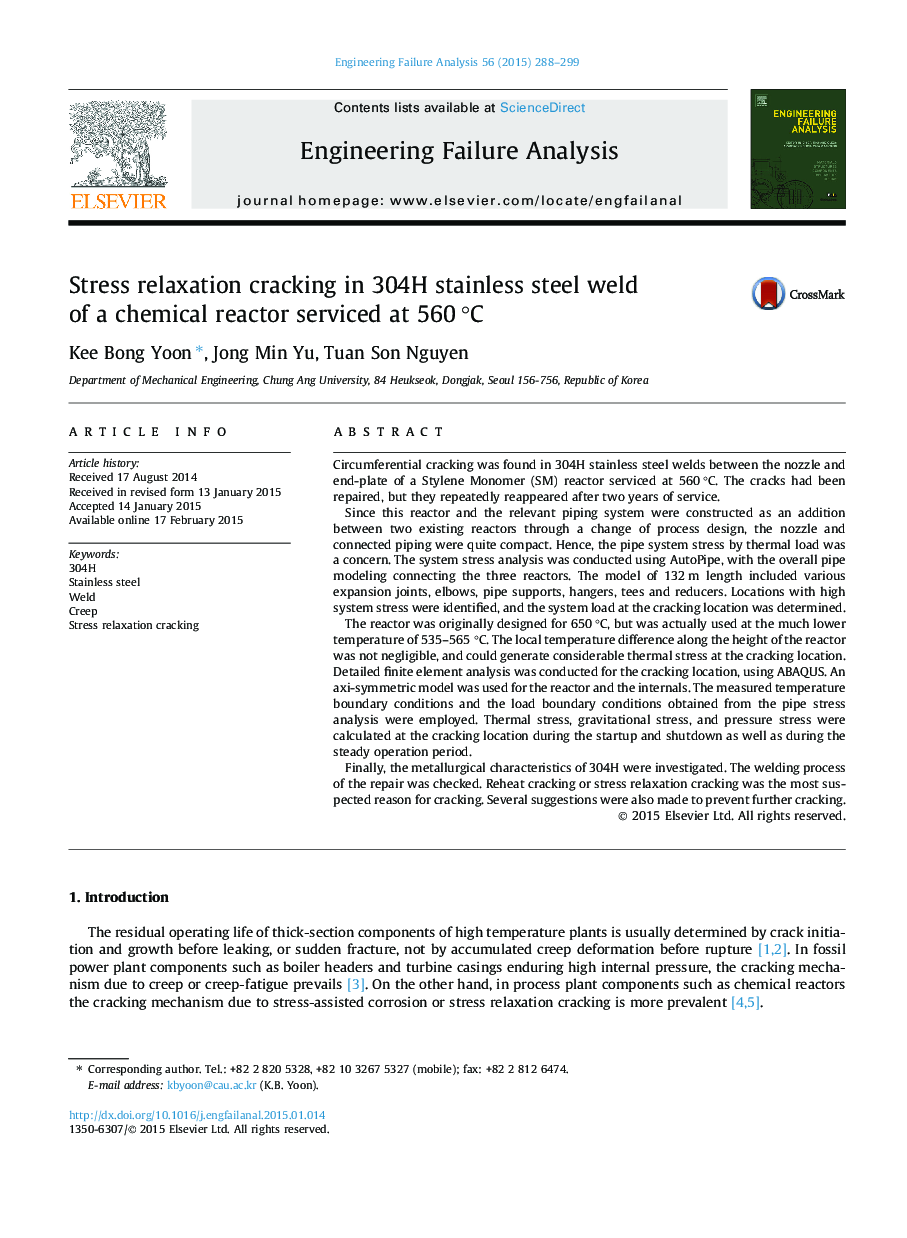| کد مقاله | کد نشریه | سال انتشار | مقاله انگلیسی | نسخه تمام متن |
|---|---|---|---|---|
| 768298 | 1462969 | 2015 | 12 صفحه PDF | دانلود رایگان |

• Repeated cracking occurred at repaired 304H stainless steel weld in a thick reactor operated at 560 °C.
• Stress relaxation cracking is shown to be the most probable cause of cracking.
• The carbides precipitated within the grain strengthened the grain and prevented grain deformation at high temperature.
• Fine precipitates were also formed at the grain boundaries, which weakened the grain boundaries.
• Consequently the intergranular cracking occurred.
Circumferential cracking was found in 304H stainless steel welds between the nozzle and end-plate of a Stylene Monomer (SM) reactor serviced at 560 °C. The cracks had been repaired, but they repeatedly reappeared after two years of service.Since this reactor and the relevant piping system were constructed as an addition between two existing reactors through a change of process design, the nozzle and connected piping were quite compact. Hence, the pipe system stress by thermal load was a concern. The system stress analysis was conducted using AutoPipe, with the overall pipe modeling connecting the three reactors. The model of 132 m length included various expansion joints, elbows, pipe supports, hangers, tees and reducers. Locations with high system stress were identified, and the system load at the cracking location was determined.The reactor was originally designed for 650 °C, but was actually used at the much lower temperature of 535–565 °C. The local temperature difference along the height of the reactor was not negligible, and could generate considerable thermal stress at the cracking location. Detailed finite element analysis was conducted for the cracking location, using ABAQUS. An axi-symmetric model was used for the reactor and the internals. The measured temperature boundary conditions and the load boundary conditions obtained from the pipe stress analysis were employed. Thermal stress, gravitational stress, and pressure stress were calculated at the cracking location during the startup and shutdown as well as during the steady operation period.Finally, the metallurgical characteristics of 304H were investigated. The welding process of the repair was checked. Reheat cracking or stress relaxation cracking was the most suspected reason for cracking. Several suggestions were also made to prevent further cracking.
Journal: Engineering Failure Analysis - Volume 56, October 2015, Pages 288–299